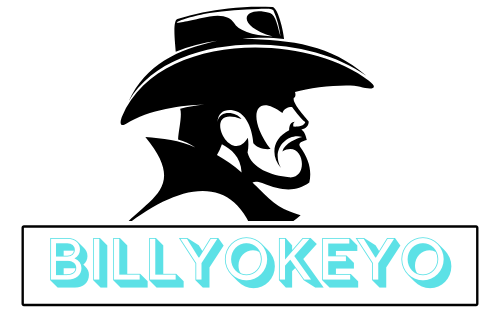Welcome to the future of organizational excellence! As businesses evolve, so do their management systems. Enter SOMS (Strategic Organization Management System), a powerful approach that’s reshaping how companies operate. It’s not just about keeping track of tasks; it’s about aligning every aspect of an organization toward strategic goals.
Gone are the days when traditional management systems dictated rigid hierarchies and outdated processes. Today’s fast-paced world demands flexibility, creativity, and innovation in management practices. With SOMS, organizations can foster collaboration and responsiveness while driving growth.
Are you ready to explore how this transformative system is redefining modern management? Let’s dive into the incredible potential that SOMS holds for your organization!
The Flaws of Traditional Management Systems
Traditional management systems often rely on rigid structures. This inflexibility can stifle creativity and hinder quick decision-making.
Communication within these systems is frequently top-down, leaving little room for employee input. Such a hierarchy may lead to disengagement among team members who feel their voices aren’t heard.
Moreover, traditional models tend to focus heavily on short-term goals. This shortsightedness can create an environment where long-term strategy suffers.
Data collection in conventional systems is usually inconsistent. Organizations might miss out on valuable insights that could drive better performance.
Many traditional approaches struggle with scalability. As businesses grow or pivot, outdated frameworks fail to adapt effectively, leading to inefficiencies and frustration across teams.
The Benefits of Implementing SOMS in Organizations
Implementing a Strategic Organization Management System (SOMS) brings numerous advantages to organizations of all sizes.
First, it fosters enhanced collaboration among team members. With streamlined communication tools and shared resources, departments can work together more efficiently.
Second, SOMS promotes data-driven decision-making. By leveraging analytics and real-time reporting, organizations gain insights that drive strategic initiatives.
Another significant benefit is improved agility. Businesses can quickly adapt to market changes or internal challenges by having a flexible management framework in place.
Additionally, SOMS enhances accountability within teams. Clear roles and responsibilities ensure everyone knows their part in achieving organizational goals.
Employee engagement often increases as staff feel more aligned with the organization’s mission and vision through transparent management practices. This holistic approach not only boosts productivity but also cultivates a positive workplace culture.
Case Studies of Successful SOMS Implementation
Several organizations have harnessed the power of SOMS to drive success and efficiency. One notable case is a mid-sized manufacturing firm that faced challenges in project coordination. By adopting SOMS, they streamlined communication channels and enhanced collaboration across teams. As a result, productivity surged by 30% within just six months.
Another compelling example comes from a healthcare provider struggling with patient data management. Implementing SOMS allowed for better tracking of patient outcomes and resource allocation. The impact was significant, leading to improved patient satisfaction scores and reduced operational costs.
A tech startup also transformed its growth trajectory through SOMS integration. They utilized strategic planning tools embedded in the system to align their objectives with market trends. This shift not only accelerated product development cycles but also fostered innovation across departments, positioning them as industry leaders.
These examples illustrate how diverse sectors can reap substantial benefits from effective SOMS implementation.
Key Features and Components of SOMS
SOMS, or Strategic Organization Management System, incorporates several key features that redefine how organizations operate. One essential component is its data-driven approach. By leveraging analytics, SOMS provides insights that facilitate informed decision-making.
Another significant feature is real-time collaboration tools. These enable teams to communicate seamlessly across various departments, breaking down silos and enhancing efficiency.
Customization plays a vital role as well. Organizations can tailor SOMS to meet their specific needs, ensuring that the system aligns perfectly with their strategic goals.
Additionally, performance tracking capabilities allow leaders to monitor progress against objectives effortlessly. This alignment between strategy and execution fosters accountability throughout the organization.
User-friendly interfaces make adoption easier for employees at all levels. With minimal training required, teams can quickly integrate SOMS into their daily operations without disruption.
How to Integrate SOMS into Your Organization
Integrating SOMS into your organization requires a strategic approach. Begin by assessing current management practices to identify gaps and areas for improvement.
Next, involve key stakeholders early in the process. Their insights can shape the implementation strategy and increase buy-in across various departments.
Training is essential. Conduct workshops to familiarize employees with SOMS features and benefits. This ensures everyone understands how it enhances their roles.
Phased implementation often works best. Start with a pilot program in one department before rolling out organization-wide, allowing you to refine processes based on real feedback.
Utilize technology effectively during this transition. Choose tools that seamlessly integrate with existing systems while accommodating SOMS functionalities.
Maintain open communication channels throughout the integration phase. Encourage feedback and be prepared to make adjustments as needed to foster a smooth transition.
Challenges and Limitations of SOMS
Implementing a Strategic Organization Management System (SOMS) is not without its hurdles. One significant challenge lies in the initial transition phase. Shifting from traditional management methods to SOMS requires a cultural shift within the organization, which can lead to resistance among staff.
Training and adaptation are also crucial. Employees must fully understand how to utilize new tools effectively, or else the system may fall short of expectations. This learning curve can slow down productivity during implementation.
Moreover, integration with existing technologies poses another obstacle. Organizations often struggle when trying to harmonize SOMS with legacy systems that were never designed for such advanced functionalities.
Budget constraints might hinder full deployment as well. Allocating resources for both training and ongoing support is essential but can be challenging for some organizations facing financial limitations.
If not adapted continuously based on feedback, even the best-designed SOMS could become outdated quickly in an ever-evolving business landscape.
Future Outlook for SOMS and Modern Management Systems
The future of Strategic Organization Management Systems (SOMS) is bright and promising. As businesses continue to evolve, the demand for agile management systems will only increase. Companies are recognizing that adaptability and responsiveness are vital in today’s fast-paced environment.
Emerging technologies such as artificial intelligence and machine learning will play a significant role in shaping SOMS. These tools can analyze vast amounts of data, offering insights that traditional systems simply cannot provide.
Additionally, there’s a shift towards more collaborative approaches within organizations. SOMS encourages transparency and teamwork, fostering an environment where innovative ideas thrive.
As remote work becomes normalized, flexible management solutions like SOMS are essential for bridging geographical gaps. The integration of these systems ensures seamless communication across teams worldwide.
Organizations adopting SOMS now position themselves at the forefront of modern management practices, ready to tackle future challenges with confidence.
Conclusion
SOMS is reshaping the landscape of modern management systems. By addressing the flaws inherent in traditional approaches, it offers a fresh perspective on organizational efficiency and effectiveness. The benefits are clear: enhanced collaboration, streamlined processes, and data-driven decision-making create an environment ripe for innovation.
Successful case studies demonstrate how various organizations have embraced SOMS to drive significant improvements in performance. With key features tailored for contemporary needs—like adaptability and real-time analytics—organizations can find a fit that aligns with their specific goals.
Integrating SOMS may come with its challenges; however, the long-term rewards often outweigh initial hurdles. As businesses look toward the future, embracing such transformative systems could be pivotal in navigating the complexities of today’s market.
The journey toward effective management is ongoing. As we continue to innovate and adopt new strategies like SOMS, organizations will likely experience even greater advancements in operational success.





